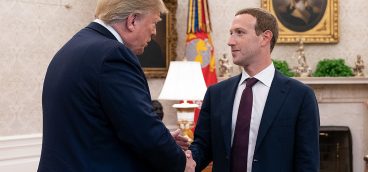If any company represents creativity, success and a new paradigm, it’s Google. With an Internet advertising model that’s revolutionizing the industry and racking up money click by click, Google’s methods and its market cap represent a wish list for many companies. Its recent opening of an office in Pittsburgh was an easy decision for the company that is now setting the corporate pace.
“We wanted creative people from Pittsburgh, so we came to them,” said Google’s Sunny Gettinger. The company rents space from Carnegie Mellon University and has established an environment that fits the needs of the creative minds who work there: flexible schedules, open office layouts and the option to disconnect.
That Google offers massages, board games and colored yoga balls may be no surprise, but it might rattle the ranks of typical upper management that Google allows employees to spend up to 20 percent of their work weeks on any project they choose. But why worry? Nearly half of the products— Gmail and Google News among them— have grown from that 20 percent employee-owned time.
“We let bright software engineers work on whatever they want to,” said Andrew Moore, engineering director of Google Pittsburgh. And they do it for one reason. Without that culture, the company could lose productivity and its employees.
It may not be Google’s “20 percent” solution, but as competition for the best talent increases in the face of looming worker shortages, Pittsburgh companies of several stripes are crafting their own creative cultures. What are they doing? And more important, is it working?
To understand the changing workplace, consider what the $4 cup of coffee suggests about consumer preferences. It’s relatively inexpensive to produce good coffee, but drinkers are loyal to brands and a certain look. Whether or not they admit it, people will pay more because of how a product is presented. And the subjective, extra value placed on a product comes — at one time or another — from the mind of a creative professional.
You can still build a better mousetrap, or you could simply sell the same mousetrap for more money. Either way, creativity is the key. So why not shape the work culture to stimulate creativity? Shouldn’t the preferences of the marketers, researchers, scientists and engineers who add creative value inform the culture in the places they work?
Pittsburgh native Paul Graham, who sold an online shopping technology in the late 1990s, and who now heads an investment firm called Y Combinator, believes in the value of creativity so much that his investment firm will pay people up to $10,000 to move to California and work under his supervision. The money amounts to little more than what’s needed to keep the lights on and pay the gas bill for a half year. But it signifies a change in the perceived value of a good idea that has yet to be associated with a profit model.
Whereas even 15 years ago, talented young people would likely have gone to work for a traditional company in an entry level position, Y Combinator’s grantees are funded to develop ideas into a rough sketch of a concept. “What Y Combinator would like to do,” wrote one critic, is to “systematize the archetypal two guys in a garage.”
Pittsburgh firms of all sizes have modified their company culture to attract the kind of talent applying for funding at Y Combinator.
Perhaps no other business has taken it as far as Davison Inventegration, a 17-year-old design company that brings inventions to the marketplace. The company recently announced InventionLand, an intricately conceived, imaginative world, hidden in an otherwise drab technology park in O’Hara. It’s a workspace for employees designed by employees.
“InventionLand tears down the white walls of a traditional workspace and opens it up to the imagination,” writes CEO and Founder George Davison. While working in InventionLand, creators of toys and games do their work on the deck of a pirate ship, or more specifically on a set designed to look like one. The ship has a mast, rigging and cannon. Each designer sits along a gunwale while the boss mans the helm. Company executives conclude each day by meeting at King Arthur’s round table, presumably to discuss changes in patent law or to trade workplace minutiae.
Davison Inventegration offers more than a chance to work in Disneyland, according to seven-year employee Jarrod Campbell. “It’s a relaxed environment where you can express yourself.” That’s the goal, according to Davison who has hung a sign in the company kitchen: Fresh Ideas Served Daily. “If I had my way, we would celebrate creative people more.”
Given the high cost of constructing InventionLand, Davison certainly believes what he says, but what’s more apparent is that his mission reaches beyond the office. One of his design teams has developed a pilot television program for a children’s cartoon series titled, “The Inventsons.” The cast of characters face challenges associated with inventing and aims to inspire children.
Of the apparent variety of people who come to work for him, Davison said, “If you have the skill set we’re looking for, you have a place here.”
With creativity being its stock in trade, Marc USA was an early adapter in building an environment that breeds new thinking. “We were the first agency in the country to reorganize into cross-functional teams more than a decade ago. We literally tore the walls down. No one works behind closed walls,” said Cheryl Sills, director of corporate communication.
The open layout means that the exterior walls that receive daylight — traditionally reserved for upper management —are now common spaces available to everyone. At MARC, it’s difficult to tell the management from the employees.
The Station Square offices are within walking distance of the Monongahela River. Creative Director Andrew McKenna goes there during the day to think through an ad campaign or commercial. “We encourage people to get out of the office. Art museums, shows, photo exhibitions. To understand your audience, you need to be exposed.”
Does the need for a creative culture in the workplace extend to an industry that prides itself on…not changing?
“In the restaurant business, the holy grail of customer service is consistency,” said David Yam, owner of Lulu’s Noodles in Oakland.
But consistency doesn’t exclude creativity in a restaurant’s design. At Lulu’s, the black and white photos hanging on the wall are life-sized, and the ceiling fans are colored in every shade of the rainbow, unique for a restaurant that sells entrees for under $6.
“A restaurant is like art. You can do with it whatever you want,” said Yam. That may be true for the owner, who travels to New York to pick out those ceiling fans, but what about the employees?
“The cook designed the menu, and the people in the photographs are my customers.” And it’s hard to know where the employees end and patrons begin. “An employee who can’t make a shift can send a friend to work for them,” he said. Apparently, the relaxed work culture pays off. College students consistently rate the restaurant “best place to eat off campus.”
At least one retail store makes a business out of creativity. “Simply choosing to reuse something requires at least a spark of motivation because our society makes it easy to dispose of unwanted items,” said Mike Gable, executive director of the Point Breeze-based Construction Junction, a store that sells recycled building materials.
Gable asked employee Gary Greiwe to curate the 2005 Art Salvo Show, which gets members of the public to make art from salvaged building materials. “I can’t emphasize enough how important a positive and open work environment is for fostering creativity,” Greiwe said, crediting his co-workers for the store’s energy.
Construction Junction has collaborated with local non-profits to widen interest in recycled construction materials. It will host Steel City Biofuels to sell fuel made from waste cooking oil. Having the community play a role is a recurrent theme among companies with creative cultures.
According to Diana Kamyk, manager of diversity and worklife at Bayer, the German company’s North American headquarters has also learned the value of being flexible to meet the needs of the creative set. In addition to an account for dependent daycare spending, the company allows moms-to-be to take 17 weeks off (up to six fully paid) and all employees are permitted to take an educational leave of absence, extending up to a year.
Especially at a large company, it’s important to make sure ideas can flourish. “Ideas aren’t killed,” said Bayer scientist Nad’a Spisakova, who worked from home after her child was born. “Out-of-the-box ideas are protected in a ‘greenhouse,’ until they are evaluated for their business potential.”
UPMC has a similar business development model. Chuck Bogosta, executive vice president for strategic business initiatives, develops and maintains commercial environments for the largest private employer in western Pennsylvania.
Two years ago the SBI office was established to support new technologies and acquire emerging ones. As an example, UPMC acquired D3, a technology which provides a hospital with the capability to view high-level radiation therapy imagery online.
“Soap operas are set in hospitals because of typical bureaucracy and infighting,” he said. “But the traditional profit centers are in decline, and UPMC has recognized the need to change.” Bogosta credits CEO Jeffrey Romoff for being open to arenas not traditionally associated with health care, such as private equity and investment banking. “I was hired to acquire potential profit centers—and we move quickly to do it.”
Large companies are known to diversify profit centers to reduce long-term risk, but what has changed in companies as large as UPMC seems to be the people hired to do the job.
“These companies are recognizing the changing mode of doing business,” said Tom Flannery of the headhunting firm Boyden International, which places top-level executives. “They are hiring people who can add creative value.”





